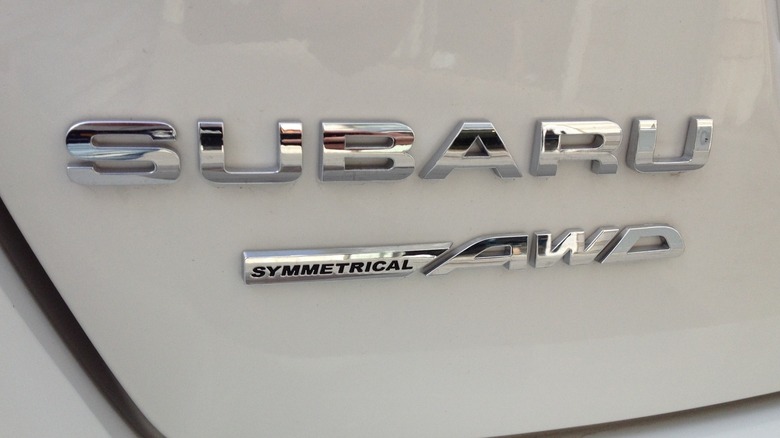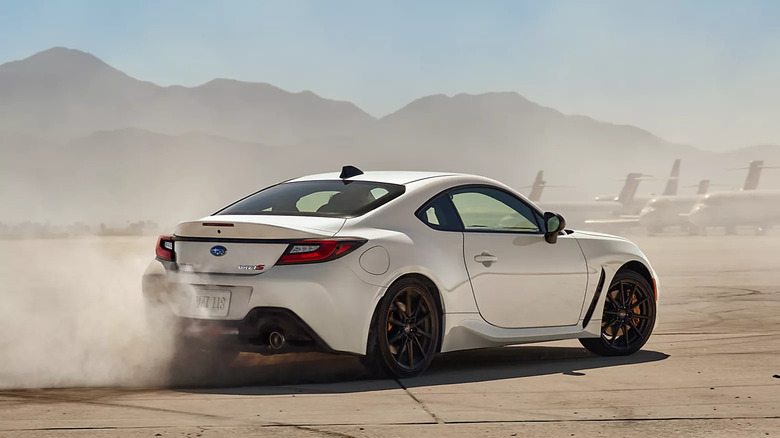Are All Subarus AWD? If Not, Which Models Have A Different Drivetrain?
Subaru and all-wheel drive (AWD) are a staple pairing that has existed since 1972, when the Subaru Leone wagon first featured a part-time AWD setup as an optional extra. In 1986, Subaru began offering a full-time four-wheel drive system, which pairs the automaker's longitudinally-mounted boxer engine with a symmetrical drivetrain.
A year after debuting the full-time AWD, the Japanese automaker again introduced an electronically controlled version of the AWD system on the Subaru XT. The full-time AWD system is based around a limited-slip differential that continuously sends power to all four wheels simultaneously, so if one or more wheels lose grip, the other wheels can still move the vehicle forward. By this time, AWD was widely available across the lineup, but didn't come as standard on all Subaru vehicles until 1996. From that moment on, all Subaru models have featured AWD — with the exception of the Subaru BRZ sports car, which is built alongside the Toyota GR86, in collaboration with Toyota.
So, to answer the question, not all Subarus are AWD.
Why is Subaru AWD so popular, and how is it different from RWD?
According to a Subaru press release, 98% of its global sales come from the AWD models. While that can be attributed to all-wheel drive vehicles making up the bulk of the automaker's lineup, the AWD system has traditionally been an important aspect for car buyers in choosing Subaru. Because the system constantly sends power to all four wheels at the same time, instead of doing so only when traction has been lost like with certain AWD systems, there's no loss of grip. This also makes AWD Subaru vehicles quite stable even in demanding handling situations; no matter whether that's in sand, mud, ice, snow, or other excessively slippery or loose road surfaces.
In the case of rear-wheel drive, as used on the Subaru BRZ, the engine delivers its torque and power to the rear wheels instead of all four to ensure a near 50:50 weight distribution. The extra weight from the rear-wheel drive parts out back helps to balance out the engine's weight up front and thus improve handling in sporty driving. However, because power is only being applied to the rear wheels, there can be loss of grip in slippery conditions. This is the only model in Subaru's current lineup that doesn't offer AWD — everything else typically offers symmetrical AWD as standard.

